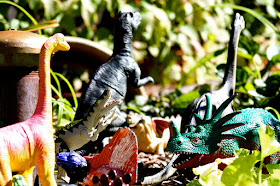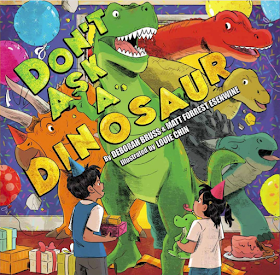Welcome to the Poetry Tent!
Inside, our newest TLD Contributor is patiently awaiting her introduction—
 |
| B. J. LEE |
B.J. is one of the more prolific "freelance" poets I know, with nearly 100 poems published in magazines and anthologies. What's more impressive is how wide-ranging her work is, and the fact that she chooses to write much of it using traditional poetry forms. If you haven't yet puzzled your way through poetry forms with strict rules about syllable counts, rhyme, meter, and repetition, let me tell you, it's no easy undertaking! B.J.'s craftsmanship is meticulous and exquisite. At one point we shared a poetry critique group
(Poets' Garage) and I learned so much from watching her work through revisions. From the outside, it's a bit like magic.
Here at Today's Little Ditty, she's been featured in
Limerick Alley and has contributed wonderful poems to Ditty of the Month Club challenges, including a roundel, poems in the style of Marlowe's "The Passionate Shepherd to His Love" and Yeats's "The Lake Isle of Innisfree," and many others. (Read all of her featured poems on Today's Little Ditty
HERE.) She also has poems in both editions of
The Best of Today's Little Ditty, and her debut picture book,
There Was an Old Gator Who Swallowed a Moth, arrives from Pelican Publishing next spring.
Frankly, I don't know of anyone more qualified to talk about different poetry forms than B.J., so fortunately for us, that's what her TLD contributor posts will be about.
She begins today with a look at one of her favorite forms—the roundel.
* * * * * * * * * * * * * * * * * * * * * * * *
When I first started writing children’s poetry, I used simple rhyming patterns such as ABAB and either ballad meter or a more rollicking anapestic meter. But as time went on, and I encountered poems written in different forms, I was intrigued and wanted to explore them. One of the earlier forms I fell in love with was the roundel.
The roundel consists of nine lines, each having the same number of syllables, plus a repetend (refrain) after the third line and after the last line. The repetend must be identical with the beginning of the first line: it may be a half line, and should rhyme with the second line. The roundel has three stanzas and its rhyme scheme is as follows: ABAR; BAB; ABAR, where R is the repetend. It sounds more complicated than it is!
Algernon Swinburne invented the form in the Victorian era (take a look at
his poem "The Roundel" at Poetry Foundation), and
Christina Rossetti and others quickly adopted it.
Here is an early roundel by Amy Levy, from
A London Plane-Tree and Other Verse (1989). I’ve notated the rhyme scheme. Notice the *specialness* of the repetend!
A lovely roundel with a sparkly repetend! How did Amy do it? I was determined to find out.
I began exploring roundels, reading and writing. One of the first roundels that I ever wrote was a speculative roundel which was published in the dark children’s magazine, edited by agent Bree Ogden, called
Underneath the Juniper Tree.
 |
| © 2011 B. J. Lee. All rights reserved. As published in Underneath the Juniper Tree. |
The things I saw when I was lost
and followed signs for "Devil's Claw."
I took that road at such a cost—
the things I saw!
Through forest trees I peered in awe
at witches standing in the frost,
who handled things—an ear, a paw,
then quickly, in their cauldron tossed
these objects with a birdie's craw.
I turned and fled. My eyes had crossed—
the things I saw!
– B. J. Lee
With this roundel, I was lucky to hit upon the “aw” rhymes coupled with the “ost” rhymes, which are actually very similar in sound. Notice that the repetend is “catchy,” something I think is critical to the success of a roundel, second only in importance to the theme of your poem. The repetend must be effective. The repetend must also be a phrase that bears repeating. And, it has to end on a good rhyming word, since it is part of the B rhymes.
That brings us to the rhymes! You need five A rhymes and five B rhymes (the repetend’s last word + 4 others) for a roundel. My process is to first see if the repetend I have in mind works rhyme-wise, and if not, find an alternate repetend. Your five A rhymes and B rhymes will have to work well together. I look at
rhymezone online, and try to loosely see if I can get five A rhymes and five B rhymes that might work, without any forced rhymes, for my particular theme. Once I have five A rhymes and five B rhymes that I think could work, I proceed. It may take several tries with different sets of A and B rhymes.
Sometimes a roundel does not work out at all, but usually in the process, I can salvage some kind of poem out of it so the effort is not a complete loss. And if it works out, you have a poem in a cool form—a roundel to be proud of!
I personally find the roundel to be one of the easiest of the repeating forms, which include the pantoum, villanelle, triolet, rondeau, rondel, sestina and ghazal.
Remember, a good repetend is critical to the success of your roundel. It must be:
- Catchy
- Effective
- Something that bears repeating.
- Have four solid rhymes, with no forced rhymes.
Do you want to try it? Ready? Set! Write a roundel!
* * * * * * * * * * * * * * * * * * * * * * * *
If you'd like to share a roundel that you've written, please feel free leave it in the comments.
Read the roundel B.J. wrote for Rebecca Davis's Kindness Poem challenge HERE.
Thank you for this "sparkly" post, B.J., and for taking on this new role at Today's Little Ditty. You make writing roundels look easy! I'm sure I'm not the only one looking forward to learning about other poetry forms in future.
B.J. Lee’s debut picture book,
There Was an Old Gator Who Swallowed a Moth, is forthcoming from Pelican Publishing (Spring, 2019). She has written poems for many anthologies, including
Construction People (ed. Lee Bennett Hopkins),
The National Geographic Book of Nature Poetry, National Geographic’s
Poetry of US (ed. J. Patrick Lewis),
One Minute Till Bedtime (ed. Kenn Nesbitt), as well as popular children’s magazines. Visit B.J. at
her website.
The fun is nonstop during National Poetry Month . . .
and so are the giveaways at Today's Little Ditty!
Random.org has determined that the winner of a copy of
With My Hands: Poems About Making Things by Amy Ludwig VanDerwater, illustrated by Lou Fancher and Steve Johnson is . . .
DIANNE MORITZ
Congratulations, Dianne!
Featured on Today's Little Ditty earlier this week:
H is for Haiku: A Treasury of Haiku from A to Z by Sydell Rosenberg, illustrated by Sawsan Chalabi (Penny Candy Books, 2018). Don't miss the special guest post by Amy Losak and giveaway
HERE.
DMC dinosaur poems have been causing quite a ruckus! Featured this week were daily ditties by
David McMullin,
Jessica Bigi, and
Kate O'Neil. Believe it or not, our wrap-up celebration is coming up next Friday, so go ahead and add your poem to the
April 2018 padlet before it's too late. One lucky participant will win a copy of
Don't Ask a Dinosaur (POW! Kids, April 2018) signed by Deborah Bruss and Matt Forrest Esenwine.
In celebration of TLD's fifth birthday, I'm
giving away five sets of
The Best of Today's Little Ditty (Vols 1 & 2) to educators—teachers,
caregivers, volunteers... anyone who shares their love of poetry with
students of any age. To enter, contact me via blog comment, email, Facebook, or Twitter. I'll be compiling a
list and drawing names at the end of April.
Now head on over to
The Opposite of Indifference where Tabatha Yeatts is also celebrating a birthday—
it's a new anthology! I'm honored and excited to have three poems in
Imperfect: poems about mistakes: an anthology for middle schoolers. And wouldn't you know, she's also hosting this week's Poetry Friday roundup. Score!






























